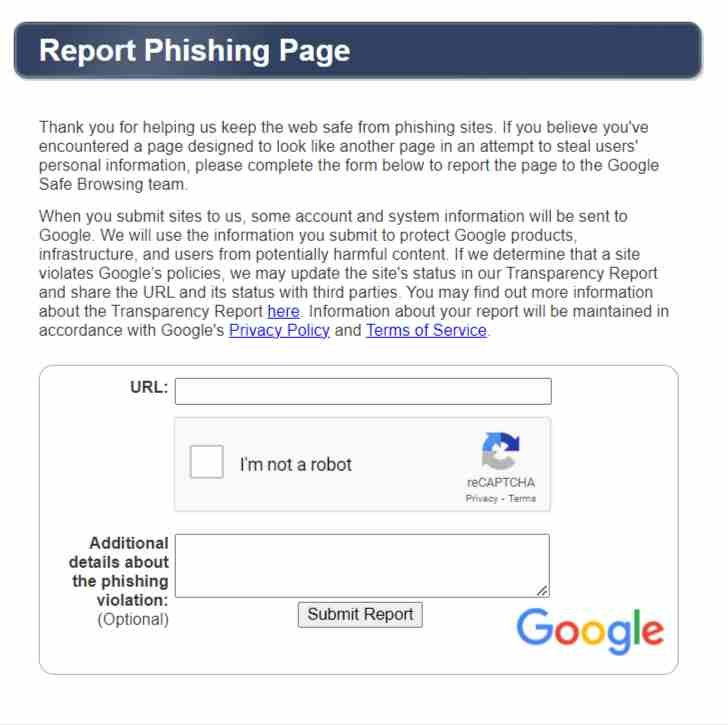Earlier in our blog we knew about how to report incorrect Phishing warnings. Today in this informative article we will let you know about how to report a Phishing page to Google correctly..
Let’s combat this growing problem together and help protect others from falling victim to these scams.
Identifying a Phishing Page
Before we delve into the process of reporting a phishing page to Google, it’s crucial to understand how to identify one.
Phishing pages often have tell-tale signs that can help you differentiate them from legitimate websites. Here are a few red flags to watch out for:
- Inaccuracy: The URL may contain misspellings or variations of a well-known domain.
- Appearance: The website may have a generic or suspicious-looking design.
- Phishing: You may receive an unsolicited email or message directing you to the website.
- Deceptive: The page may request sensitive information, such as passwords or financial details.
- Red flags for “language concerns.”: There may be grammatical errors or poor language usage on the website.
Reporting a Phishing Page to Google
If you come across a phishing page, it’s important to report it to Google promptly. By doing so, you can help protect others from falling victim to the same scam. Here’s how you can report a phishing page to Google:
- Visit the Google Safe Browsing website at https://safebrowsing.google.com/safebrowsing/report_phish/?hl=en.

- Copy the URL of the phishing page you want to report.
- Paste the URL into the provided text box on the Google Safe Browsing page.
- Click on the “Submit” button to report the phishing page to Google.
It’s important to note that Google takes user privacy and security seriously. When you report a phishing page, Google analyzes the website and takes appropriate action to protect users. This may include displaying warnings to users who try to access the reported page or removing it from search results altogether.
Additional Steps to Protect Yourself
While reporting phishing pages to Google is an essential step in combating online scams, there are additional measures you can take to protect yourself:
- Caution: Be cautious when clicking on links or downloading attachments from unknown sources.
- Maintenance: Regularly update your computer’s operating system and antivirus software.
- Security: Use strong, unique passwords for your online accounts and enable two-factor authentication whenever possible.
- Authentication: Verify the legitimacy of websites before entering sensitive information.
- Vigilance: Stay informed about the latest phishing techniques and scams.
By following these precautions, you can reduce the risk of falling victim to phishing attacks and help create a safer online environment for everyone. Or else if you are looking for reporting malacious software on a webpage then you can take the help of this guide: Report Malicious Software to Google Safe Browsing.
Conclusion
Phishing is a pervasive online threat, but by reporting phishing pages to Google and taking proactive steps to protect yourself, you can minimize the risk of becoming a victim. Remember to stay vigilant, educate yourself about the latest scams, and report any suspicious websites you encounter. Together, we can make the internet a safer place for all users.









